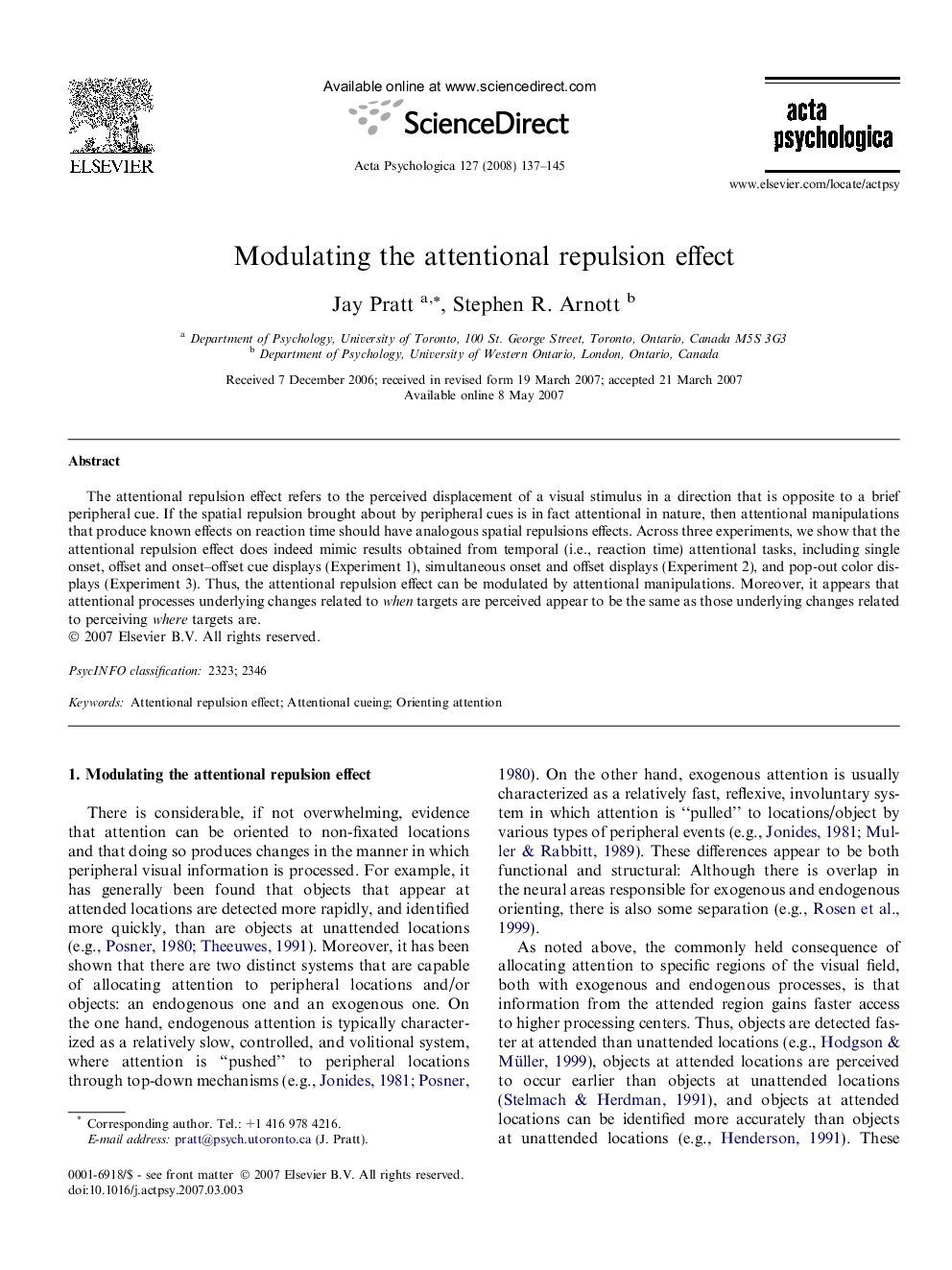| Article ID | Journal | Published Year | Pages | File Type |
|---|---|---|---|---|
| 920555 | Acta Psychologica | 2008 | 9 Pages |
The attentional repulsion effect refers to the perceived displacement of a visual stimulus in a direction that is opposite to a brief peripheral cue. If the spatial repulsion brought about by peripheral cues is in fact attentional in nature, then attentional manipulations that produce known effects on reaction time should have analogous spatial repulsions effects. Across three experiments, we show that the attentional repulsion effect does indeed mimic results obtained from temporal (i.e., reaction time) attentional tasks, including single onset, offset and onset–offset cue displays (Experiment 1), simultaneous onset and offset displays (Experiment 2), and pop-out color displays (Experiment 3). Thus, the attentional repulsion effect can be modulated by attentional manipulations. Moreover, it appears that attentional processes underlying changes related to when targets are perceived appear to be the same as those underlying changes related to perceiving where targets are.
